The UK is home to seven native species of amphibian. Over the winter, these frogs, toads and newts have all been hibernating, but it will soon be time for them to venture out to their breeding ponds and pools. If you’re lucky, you will be able to spot them when you’re out and about.
In this blogpost we will provide you with some of the key characteristics of each species which will help you to identify exactly what you’re looking at. For those of you who are keen to find out more, we have also provided a list of field and identification guides at the bottom of the page.
Newts
Newts are members of the salamander family and have a lizard-like body shape. They are semi-aquatic, spending part of the year on land, returning to the water in spring to breed. Eggs are laid in the water where they hatch into tadpoles and then proceed to develop front and back legs, along with gills for breathing. They leave the water in late summer once their gills have been lost.
The three species of newt which are native to the UK are the Smooth Newt (Lissotriton vulgaris), the Palmate Newt (Lissotriton helveticus) and the Great Crested Newt (Triturus cristatus).
Smooth Newt:
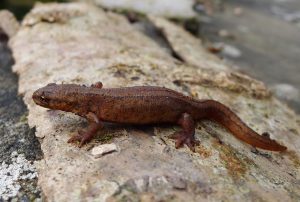
• Size: Grows to around 10-11cm in length.
• Colour: Males brown/olive; females light brown. Belly is usually yellowy orange with black spots. The throat is pale with darker spots.
• Skin Texture: Smooth
• Habitat: Spring to early summer in ponds and pools (frequently found in garden ponds). Late summer under logs and stones near to water.
• Other notes: The male has a wavy back crest during the breeding season.
Palmate Newt:
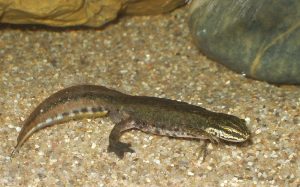
• Size: Grows to around 7-11cm; slightly smaller than the smooth newt.
• Colour: Males olive brown; females yellowish brown. The throat is white/pale pink and does not have spots or speckling. The eye has a dark stripe running horizontally through it.
• Skin Texture: Smooth
• Habitat: During the breeding season (early March to late May) in shallow ponds, often in heathland bogs. During summer in woodland, ditches and gardens near to water.
• Other notes: During the breeding season, the male palmate newt has a ridge running along its back and a tail which ends in a filament. Its back feet are also webbed.
Great Crested Newt
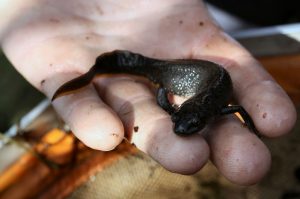
• Size: Up to 15cm in length. Females may be even larger than this.
• Colour: Dark brown or black with white/silver dots on sides. Underside is orange with black spots. Pale throat.
• Skin Texture: Warty
• Habitat: March to May in deep ponds with vegetation. Great crested newts often range further than smooth or palmate newts during the summer and can be found in gardens, ditches and woodland.
• Other notes: The male has a very distinctive crest during the breeding season which is broken at the point where the tail meets the body. The crest also has a silver stripe.
Frogs
Frogs are short-bodied, tailless amphibians that largely lay their eggs in water. These eggs hatch into aquatic larvae, known as tadpoles, before metamorphosing into froglets and then adults.
There are two native species of frog in the UK: the Common Frog (Rana temporaria) and the Pool Frog (Pelophylax lessonae).
Common Frog
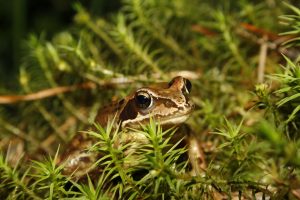
• Size: Adults grow to 6-9cm in length.
• Colour: Olive green to yellow-brown. Usually spotty or stripy with dark patches behind the eyes and darker barring on hind legs.
• Skin Texture: Smooth and moist.
• Habitat: From late February to early October in all sorts of ponds and pools. Common in gardens.
• Other notes: Moves by hopping. Common frogspawn is gelatinous with black embryos and tadpoles are initially black but turn speckled brown. (This is a useful way of distinguishing them from toad tadpoles, which remain dark until development).
Pool Frog
• Size: Adults grow to 6-9cm in length.
• Colour: Usually brown with dark spots. Light yellow back stripe.
• Skin Texture: Smooth and moist.
• Habitat: Currently only present in localised spots in East Anglia.
• Other notes: Males have prominent vocal sacks on the side of the mouth.
Toads
Toads are characterised by dry-looking, warty skin and short legs. They usually move via a lumbering walk, as opposed to the hopping motion used by frogs. As with frogs, most toads lay their eggs in water. These hatch into tadpoles before growing legs and metamorphosing into the adult form.
Within the UK there are two native species of toad: the Common Toad (Bufo bufo) and the Natterjack Toad (Epidalea calamita).
Common Toad
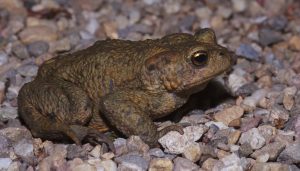
• Size: Females grow up to 13cm whilst males are smaller and usually reach only 8cm.
• Colour: Brown to grey-green. Paler on the underside.
• Skin Texture: Dry-looking and warty.
• Habitat: From late February in damp, shady spots near to breeding ponds. During the summer in woodlands, gardens and fields.
• Other notes: The common toad has amber eyes with a horizontal pupil. Moves with a lumbering walk or small hop. Eggs are laid in strings in a double row. Upon hatching the tadpoles are dark and, unlike frog tadpoles, remain so until they develop.
Natterjack Toad
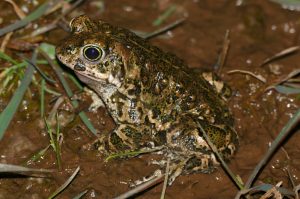
• Size: Females grow up to 8cm whilst males are slightly smaller.
• Colour: Pale brown/green, often with brightly coloured red or yellow warts. Yellow stripe down the spine.
• Skin Texture: Dry-looking and warty.
• Habitat: Coastal dunes and lowland heath, often in open, unshaded habitats. The natterjack toad is very rare in the UK.
• Other notes: The natterjack toad has amber eyes with a horizontal pupil. Moves with a running motion, rather than hopping. Lays strings of eggs in a single row.
Further reading:
Amphibians and Reptiles
A comprehensive guide to the native and non-native species of amphibian and reptile found in the British Isles. Professor Trevor Beebee covers the biology, ecology, conservation and identification of the British herpetofauna, and provides keys for the identification of adult and immature specimens as well as eggs, larvae and metamorphs.
Britain’s Reptiles and Amphibians
This detailed guide to the reptiles and amphibians of Britain, Ireland and the Channel Islands has been produced with the aim of inspiring an increased level of interest in these exciting and fascinating animals. It is designed to help anyone who finds a lizard, snake, turtle, tortoise, terrapin, frog, toad or newt to identify it with confidence.
A Guide to the Reptiles and Amphibians of Britain and Ireland
This laminated pamphlet is produced by the Field Studies Council and covers the 13 species of non-marine reptile and amphibian which breed in Britain, as well as the five species which breed in Ireland. These include frogs, toads, newts, snakes and lizards.
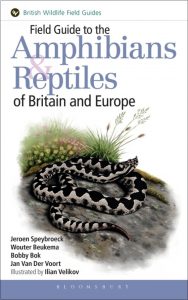 Field Guide to the Amphibians and Reptiles of Britain and Europe
Field Guide to the Amphibians and Reptiles of Britain and Europe
This excellent field guide covers a total of 219 species, with a focus on identification and geographical variation. The species text also covers distribution, habitat and behaviour. Superb colour illustrations by talented artist Ilian Velikov depict every species.
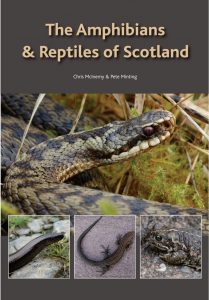 The Amphibians and Reptiles of Scotland
The Amphibians and Reptiles of Scotland
This book is designed to be an interesting and informative guide to the amphibians and reptiles that are found in the wild in Scotland. The authors have focused on those species native to Scotland, plus those which are non-native but are breeding in the wild.

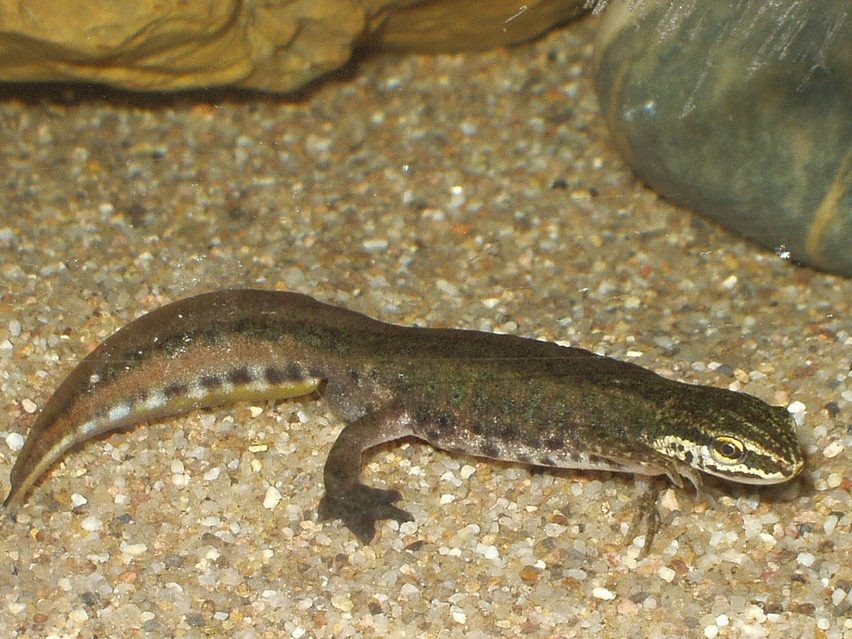
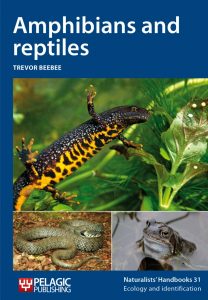
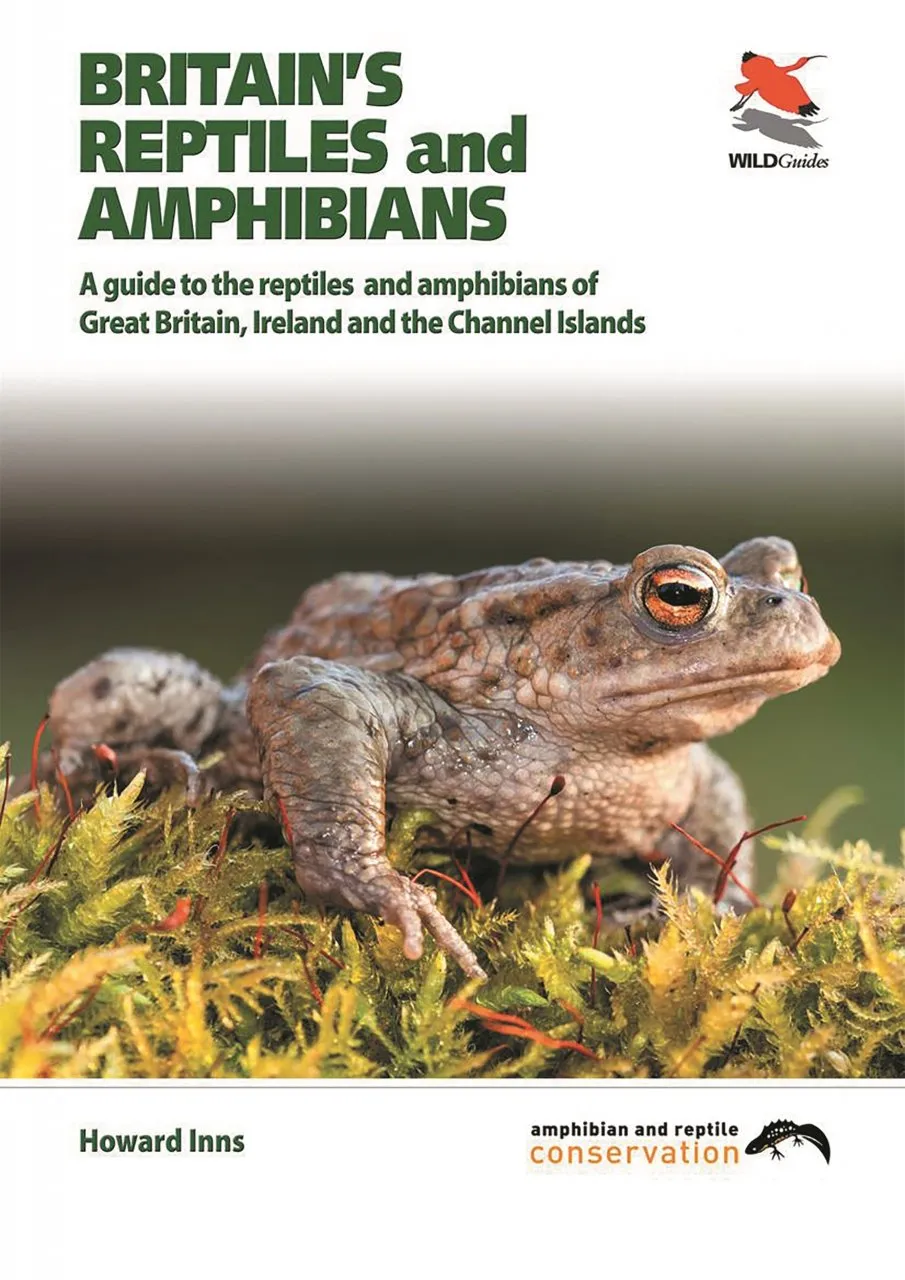
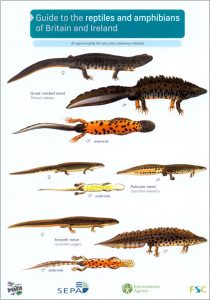
There’s a long-established (several decades) population of Pool Frogs in the Hull valley, East Yorkshire. Tophill Low is a good place to heard and see them.
HELP!
Just fund a great crusted newt, under pond liner… The pond as been empty more than two weeks.
She doesn’t look to good… Do I need to put HER, fully under water or above water?
Hi Carl,
Thanks for your message. Great Crested Newts are a strictly protected species so although you are very lucky to find one, I would advise that you do not move it. Don’t worry too much if she’s not in the water as this species does venture out of ponds at the end of the summer to find somewhere to hibernate. Are you in touch with an ecologist at all? If you have an ecologist, I would contact them immediately as they will be much more knowledgable and will probably have a license to move the newt if needed. If you don’t have an ecologist, you could contact one for some advice. Alternatively, you could get in touch with ARC (amphibian and reptile conservation) who may be able to advise you. Their telephone number is 01202 391319. Let me know if you have any other questions and I will do my best to help.
Many thanks and kind regards,
Antonia Peacock
Wildlife Equipment Specialist – NHBS
Just seen a legless critter that was approx 4 inches long olive coloured with 2 lines of spot markings down its back. Had a pointed nose. First thought it was a fat slug but definitely not. Any suggestions as to what it is. Seen in South Cheshire end of August!
Hi Kim,
Thanks for your question. How curious – we’ve had a talk among the team and we think it could have been an Elephant Hawk-moth caterpillar. Have a google search and see if this looks right. Let us know what you think!
Many thanks and kind regards,
Antonia Peacock
Wildlife Equipment Specialist – NHBS
Hi,
We found a tiny little creature in a house, far from water! Turns out it is some kind of salamander, from nose to tail about 2 inches long.
We now have it in a plastic tank w moist substrate and a shallow rock pool. We fed it baby crickets and smallish mealworms but I don’t think it’s eaten a uthinf yet although I’m not 100% sure.
Now been w us for 8 days and appears to be happy and walking around at night.
Can I send a picture so we can know for sure what it is and how to care for it??
Hi Christelle,
Thanks for your comment. How strange you found it in a house! Are you in the UK? If so, it is probably an escaped pet. Although we’re best with UK wildlife, you’re welcome to send us a photo to see if one of our amphibian enthusiasts can help you identify what species it may be. I’ll send you an email so you have our contact email address. If you haven’t already, it may also be a good idea to head to your nearest exotic pet shop as they will be able to best identify and help you know how to care for it.
Kind regards,
Antonia Peacock
Wildlife Equipment Specialist – NHBS
I’ve found a very large frog/toad in the wild near Edinburgh in Scotland .It was found on the edge of the river forth which is salt water but there is fresh water lagoons near by its large dark green with yellow 3 thick yellow strips on its back and bury’s all day,iv got it in a very large tank with damp substrate 30cm by 100cm deep enough to dig and a wet end of about 30cm by 15cm about 2inch deep.Would like to send you a pic if thats possable?
Many thanks for your comment. We would love to see a picture but would probably recommend returning it to where you found it unless it was in danger. Our email address is customer.services@nhbs.com
As I am ” self isolating ” (re Corona virus,) I have been gardening in parts of the garden that have been undisturbed for years. When digging out a large clump of rye grass and weeds I discovered a lot of newts. From your pictures they looked like smooth newts, but I found about 10 to 12 in the same 1 meter square area. Is this unusual and where do I put them so they are safe. By the way, I do not have a garden pond
Regards
Bill
Hi Bill,
Thanks for your comment. I hope you are keeping well while self-isolating – a perfect excuse to dig around in the garden, I agree! The smooth newts in your garden are likely feeding in the grass/weeds having woken up from hibernation recently. They can make their way a fair distance from water, so I shouldn’t be too worried that there isn’t a pond in your garden. I would advise to leave them where they are if there is enough long grass/weeds to keep them sheltered and they should make their way to a water body shortly for breeding. In terms of the numbers of them – I can’t say whether this is common or not – but it certainly sounds like you have a healthy population of newts and some great habitat in your garden!
Many thanks and kind regards,
Antonia
We found what we think is a juvenile palmate newt in our garden who didn’t look too good. We have moved him to a tank inside and will release him when he is better. Due to current circumstances we can’t get any of the food that the internet advises so are trying to feed him on ants and other small insects from the garden. I don’t think this will be enough though so was wondering if there were any human foods that it would be safe to feed him?
Hi Ben,
I’d suggest that you get in touch with Amphibian and Reptile Conservation, as they will be able to offer you more specialist advice. As you say, all of the usual things that we would recommend are difficult to get hold of with the current restrictions in place. ARC can be contacted by phone on 01202 391319 or by email at enquiries@arc-trust.org. If you send a photograph as well then they should be able to double-check the species and will have more of an idea of what condition it is in.
Good luck with the rehabilitation and I hope the release is successful!
Hello, we have a natural pond in our garden, which I keep topped up with a drip hose. We’ve got thousands of tadpoles, they are all different sizes, some are light brown spotted, most are black. Some of the smaller ones are growing legs, and some larger ones don’t have them yet. But then again some of the larger ones do have legs. I don’t understand the big variations in sizes and development stages.
We also have newts which are about 1cm long, and very light coloured/transparent. My next door neighbour has great crested newts and says we probably do too, as he found about 50 under a large slab which is only about 5 metres from our pond. My question though is about the froglets, when they leave the water they will be on open lawn, and our gardeners mow the lawn every week. I’m concerned that they will get mown up – there is no way that my husband will let the lawn grow even a few inches. is there anything I can do to avoid this turning into the killing fields?
Thanks, K
Hi Karen,
Thanks for your message – it’s great to hear that your pond has so many amphibians. What a wonderful thing to have in your garden! Regarding the tadpoles, the different sizes/development stages are most likely due to eggs that were produced at slightly different times – although it’s not impossible that you have a mix of frogs and toads (ie the larger ones without legs may possibly be toads). One way to tell is that common frog tadpoles are initially black but as they grow they turn a lighter, speckled brown, whereas common toad tadpoles remain dark until they develop.
It’s great that you are thinking about the time when they leave the pond – in fact, the terrestrial habitat around a pond is just as important as the water itself for frogs, as they spend a large portion of the year there. Are you able to leave any areas of the garden wild, with leaf piles, rocks, logs and garden debris? This will provide safe areas for them to forage and hide and will hopefully entice them away from the lawn.
Best wishes,
Luanne
Hi
We was walking in woodlands along side a lake and a canal today and my wife spotted lots of very small frogs no bigger than a 5 pence piece when we googled them later on we could only find frogs that small in India and Madagascar can you clarify what species of frog this small we have in England.
Many thanks
Luke & georgia
Hi Luke and Georgia,
Thanks for your message. What a lovely thing to spot on a walk! It is likely that the frogs you saw were simply very young common frogs. At this time of year they will have recently grown their front and back legs and lost their tails and will have only just left the water where they were spawned. They will spend the summer on land finding food and growing much bigger before finding somewhere to hibernate in the autumn.
Best wishes,
Luanne
Hi,
I build a pond in my garden a year or so ago. I have a single newt in the pond, I cannot see its throat or belly so not sure what type of newt it is.
I think an egg must have come attached to a plant. Will it be ok on it’s own? It seems very happy at the moment.
Hi Natalia,
That’s so great that your pond has attracted breeding newts – it’s always so lovely when efforts to help the local wildlife pay off so quickly. This newt will be fine in the pond – there may be others around who have already left the water and are using the local terrestrial landscape to find food. In any case – there is no need to do anything other than enjoy knowing that your pond is providing great habitat!
All the best,
Luanne
We have a natural pond in our garden. I have never seen so many newts, tadpoles & fish as we have this year. Unfortunately we have a large amount of blanket weed & duck weed which we’d normally clear but haven’t done so because of the amount of tadpoles.
Any ideas on what we should do?
Hi Lesley,
This pamphlet from Froglife has some useful advice regarding the removal of blanket/duckweed from ponds. They state: “If left unchecked, [fast growing plants such as blanket weed and duck weed] can smother ponds and limit growth of other plants. To tackle these problem plants…carefully run a net along the surface to scoop up duckweed, and twist a cane or stick amongst the blanket weed to pull this out. Always leave removed pondweeds to sit next to the pond for a day or two. This will allow animals accidentally scooped up to fall back into the pond. Don’t leave pondweeds there for too long though, otherwise their nutrients will fall back into the pond. After a couple of days, add the pondweed to your compost heap.”
I hope this is useful – good luck with your pond maintenance and I hope that your frogs do well this year.
All the best,
Luanne
I have lots of little tadpoles in nature pond but today in my fish pond seen a very large tadpole- probably 2 inches long with well developed legs, still has tail though,it’s huge compared to the other ones, and much more developed. Much darker colour as well. Any idea what this could be please?
Hi Caroline,
It’s possible that your larger tadpole is a toad rather than a frog. (Toad tadpoles remain dark while frog tadpoles are dark to begin with and then turn a mottled greenish grey with gold speckles). It’s great that your nature pond is supporting so many animals – I hope they all do well throughout the rest of the summer!
Best wishes,
Luanne